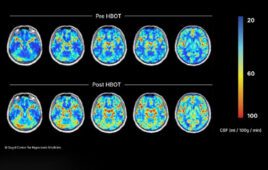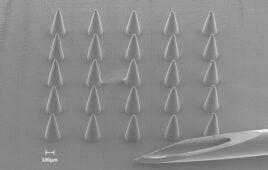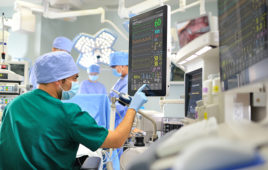A study from the University of Pittsburgh School of Medicine and the McGowan Institute for Regenerative Medicine identifies a mechanism by which bioscaffolds used in regenerative medicine influence cellular behavior, a question that has remained unanswered since the technology was first developed several decades ago. The findings were recently published online in Science Advances.
Bioscaffolds composed of extracellular matrix (ECM) derived from pig tissue promote tissue repair and reconstruction. Currently, these bioscaffolds are used to treat a wide variety of illnesses such hernias and esophageal cancer, as well as to regrow muscle tissue lost in battlefield wounds and other serious injuries.
“Bioscaffolds fulfill an unmet medical need, and have already changed the lives of millions of people,” said lead study investigator Stephen Badylak, D.V.M., M.D., Ph.D., professor of surgery at Pitt and deputy director of the McGowan Institute, a joint effort of Pitt and UPMC.
Researchers know that ECM is able to instruct the human body to replace injured or missing tissue, but exactly how the ECM material influences cells to cause functional tissue regrowth has remained a fundamental unanswered question in the field of regenerative medicine.
In the new study, Dr. Badylak and his team showed that cellular communication occurs using nanovesicles, extremely tiny fluid-filled sacs that bud off from a cell’s outer surface and allow cells to communicate by transferring proteins, DNA and other “cargo” from one cell to another.
Exosomes are present in biological fluids such as blood, saliva and urine, where they influence a variety of cellular behaviors, but researchers had yet to identify them in solid body tissues.
“We always thought exosomes are free floating, but recently wondered if they are also present in the solid ECM and might facilitate the cellular communication that is critical to regenerative processes,” Dr. Badylak said.
To explore this possibility, researchers used specialized proteins to break up the ECM, similar to the process that occurs when a bioscaffold becomes incorporated into the recipient’s tissue.
The research team then exposed two different cell types—immune cells and neuronal stem cells—to isolated matrix bound vesicles, finding that they caused both cell types to mimic their normal regrowth behaviors.
“Sure enough, we found that vesicles are embedded within the ECM. In fact, these bioscaffolds are loaded with these vesicles,” Dr. Badylak said. “This study showed us that the matrix bound vesicles are clearly active, can influence cellular behavior and are possibly the primary mechanism by which bioscaffolds cause tissue regrowth in the body.”
Researchers also found that vesicles isolated from different source tissues have distinct molecular signatures, and they are now focused on harnessing this new information for both therapeutic and diagnostic purposes.




